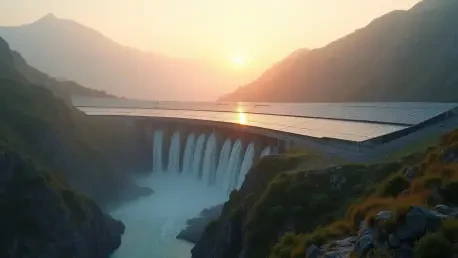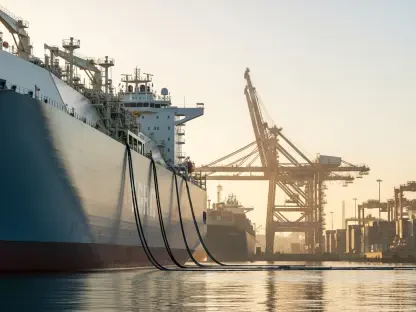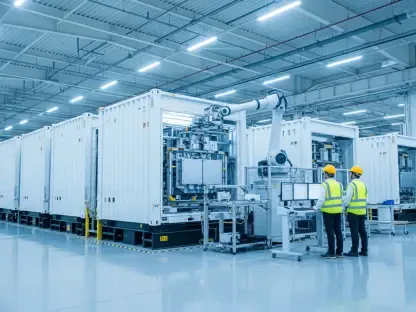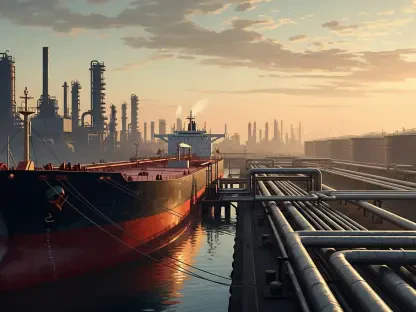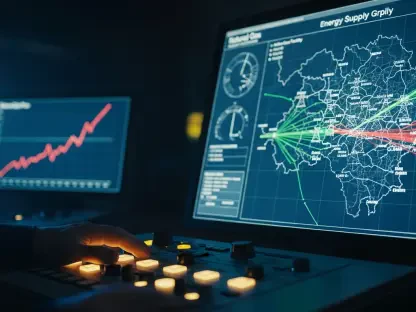In the world of energy and international collaboration, few individuals are as well-versed as Christopher Hailstone. With a rich background in energy management, renewable sources, and ensuring the reliability and security of electricity delivery, Christopher stands at the forefront of utilities strategies. He brings an insightful perspective on global energy partnerships, particularly in ambitious projects like the Arun-III Hydropower Project in Nepal—an initiative that not only highlights the engineering marvels possible within the sector but also the potential of regional cooperation to power future development.
Can you provide an overview of your recent visit to the Arun-III Hydropower Project in Nepal?
My visit to the Arun-III Hydropower Project was both enlightening and inspiring. The project, located in the Sankhuwasabha district, represents a significant step forward in energy collaboration between India and Nepal. The site is bustling with activity, and it’s remarkable to witness how the teams there are leveraging technological advancements to make something truly transformative for the region’s energy landscape.
What are the main objectives of the Arun-III Hydropower Project? How does India support this initiative, and what role does the SJVN Arun-3 Power Development Company play in the project?
The primary goal of Arun-III is to generate 900 MW of electricity, which will greatly benefit both Nepal and India in terms of energy security and economic growth. India supports this initiative through investment and technological aid, ensuring the project meets its targets efficiently. The SJVN Arun-3 Power Development Company serves as the project’s backbone, supervising construction and managing progress to optimize output and minimize delays.
During your visit, what aspects of the Arun-3 project did you review? Were there any specific challenges you discussed with Minister Dipak Khadka, and how do you plan to address these challenges?
I had the opportunity to review several critical components, including the powerhouse and dam areas. Minister Dipak Khadka and I discussed obstacles such as logistical bottlenecks and resource management. To address these, we’re focusing on streamlining operations and material supply chains, hinging on better coordination between stakeholders and employing advanced project management tools.
You mentioned launching electromechanical works at the powerhouse. Can you explain the significance of this step in the project’s progress?
Initiating the electromechanical works is a pivotal milestone—it signals the transition from basic structural work to the sophisticated phase of installing machinery that will eventually harness the water’s power to generate electricity. It’s akin to laying the heart into a sophisticated machine; everything else is built around it to ensure functionality and efficiency.
With most structural work nearing completion, what are the next phases for the Arun-3 project?
Following the structural phase, the focus will shift to integrating all components to ensure seamless operation. This involves connecting the electromechanical systems, rigorous testing, and, finally, commissioning the plant. Each step must be meticulously executed to ensure that the facility operates optimally from day one.
How does the collaboration on the Arun-3 project enhance the energy relations between India and Nepal?
Such collaborations underscore a mutual commitment to regional development and sustainability. They extend beyond resource sharing to knowledge transfer and technical expertise, fostering a stronger partnership between the two nations. This project is just the start of what could become a deeper, more resilient energy alliance in South Asia.
Besides Arun-III, what other hydro projects are being developed in Nepal with Indian support? Can you share more details about the Lower Arun Hydropower Project?
Indian support extends to the Lower Arun Hydropower Project, which is expected to produce around 669 MW of power. This project, much like Arun-III, aims to harness Nepal’s rich hydropower potential with the intent to create a sustainable energy supply that can support future economic growth for both countries.
What are the key components of the Koshi Corridor 220 kV transmission line that you and Minister Khadka will inaugurate? What impact will these facilities have on Nepal’s power infrastructure?
The Koshi Corridor transmission line includes key segments such as the Inaruwa-Basantapur-Baneshwor-Tumlingtar line and substations at Tumlingtar, Baneshwor, and Basantapur. These facilities will enhance Nepal’s ability to transmit electricity efficiently across regions, addressing issues of power scarcity and paving the way for future infrastructural growth in the country.
Can you provide more information about the new transmission line project planned with joint investment from India and Nepal?
The forthcoming transmission line project will be funded jointly and focuses on building resilience within the energy network, allowing both countries to exchange power more flexibly and reliably. Such infrastructure projects are critical for sustainable energy expansion and stability across the borders.
What future investments does India plan to make in Nepal’s hydropower sector?
Future investments will likely focus on increasing capacity and efficiency, with an emphasis on environmentally sustainable practices. We anticipate further collaborations that will explore untapped hydropower potentials and enhance existing infrastructures to promote robustness in energy supply.
During your visit, you scheduled a trip to the Muktinath Temple. Why is this visit significant?
The visit to the Muktinath Temple is both a cultural and diplomatic gesture. It’s an opportunity to honor the cultural ties that bind our nations together and to show respect for the heritage that enriches our bilateral relations. Such interactions help strengthen diplomatic goodwill beyond formal negotiations.
Besides project inspections, what are your main goals for meeting with Nepal’s government officials, including Prime Minister K.P. Sharma Oli?
These meetings are crucial for building a shared vision for energy cooperation. Engaging with Prime Minister K.P. Sharma Oli and other officials allows us to align on goals, explore new avenues for collaboration, and address any emerging issues in our partnership proactively.
How do you see the future of India-Nepal energy cooperation evolving in the coming years?
The future of India-Nepal energy cooperation looks promising, with potential expansion into newer technologies and sustainable resources. We are likely to see more joint ventures that emphasize resource optimization and energy security, ultimately driving growth and stability for the region. This synergy is vital as both countries seek to balance economic development with ecological responsibility.
